Volleyball Base Positions – Explained (With Diagrams)
The term ‘base positions refers to the locations on the court to which each different position defaults whenever the ball crosses the net to the other side.
Often called base defense or home defense This term is often used interchangeably with base defense or home defense. The idea behind this concept is to position each player in the best possible spot to be able to block or dig an attack from the opposition.
Having a firm understanding of base positions Understanding these Volleyball base positions allows teams to prepare for the ball returning over the net, whether it’s via an overpass, setter dump, quick attack, or spike.
In this article I’m going to explain, using diagrams The article will explain the base positions for each of the various types of players on the volleyball court, using diagrams to illustrate the concepts.
So Let’s Start!
When To Move Into Base Positions
Oftentimes, younger, less experienced teams, particularly when they’re just learning about volleyball rotations, forget to move into their correct positions.
Players should move into their base positions, a fundamental aspect of volleyball strategy and gameplay.
1. Upon the server’s contact with the ball, players should promptly transition to their base positions.
2. Following a successful return of serve, players should swiftly move to their base positions once they have passed/set/hit the ball back over the net.
Middle Blocker Base Positions
In the front row, when the middle blocker is positioned, their base position is in 3, signifying their preference to be directly up on the net in the middle of the court.
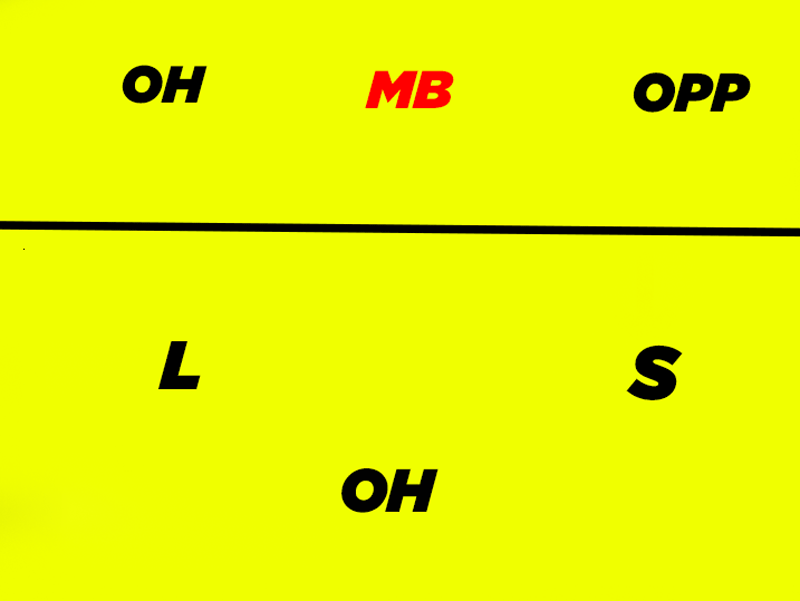
Standing in the ‘ready position’ with hands high on the net and knees bent, they should be prepared to block an attack.
Middle Blocker Back Row Base Position
Whenever the middle blocker (MB) rotates from position 2 into the backcourt (position 1), they typically serve the ball before transitioning into position 5 to engage in defense, where the libero is positioned.
Defending out of position 5 until the point is lost, the MB is then likely to be replaced by the libero.

While occupying this base position, the MB’s responsibility is to anticipate and defend against cross-court spikes from the opposition’s outside hitter, as well as line shots from the opposite hitter.
Additionally, the MB must be prepared to dive forward to defend against tips.
On occasion, the middle blocker may defend out of position 6, where the outside hitter (OH) is positioned in the above diagram.
This scenario typically arises when the MB is notably superior as a back-row hitter, and/or the OH is better suited to defending against short balls and tips.
Libero Base Positions
Typically, the libero’s base position is position 5, although some teams may opt to position them in position 6 on occasion.
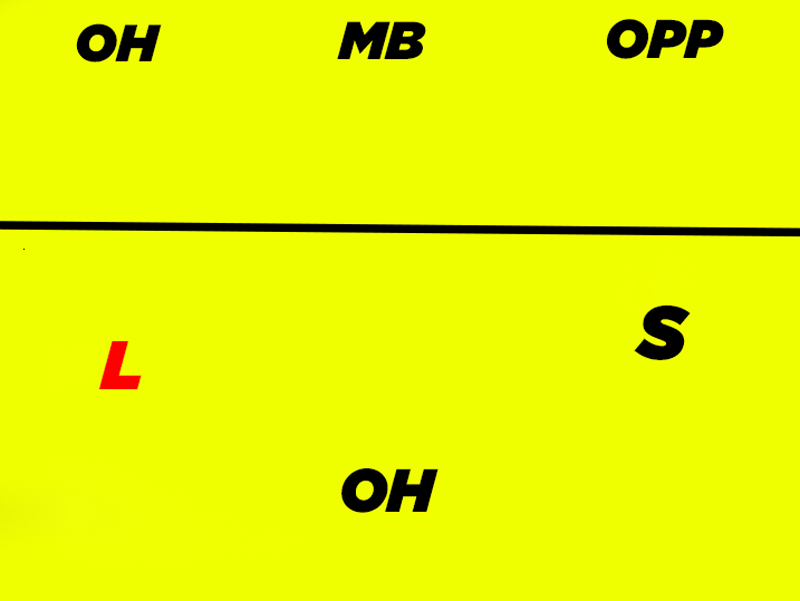
The decision to switch the libero with the outside hitter (OH) and have them play in position 6 might occur if the libero excels at lateral defense and backpedaling, while the OH is less effective as a pipe hitter but excels at defending short balls and covering tips.
Nevertheless, in the majority of cases, the libero defaults to position 5.
Their primary responsibility is to defend against cross-court spikes from the opposition’s outside hitter, line shots from the opposite hitter, and tips from any direction.
The rationale behind the libero playing base defense from position 5 is due to the outside hitter of the opposition typically receives slightly more sets than their other attackers, and they tend to hit cross-court more frequently than line shots.
Essentially, positioning the libero in this manner maximizes their potential to dig more balls than any other player on the court.
Where Exactly Should The Libero Defend?
Regarding the depth of base defense in position 5, there exists no unanimous consensus on the precise positioning.
However, a common suggestion is to stand approximately 4 feet from the sideline and 4 feet behind the 10-foot line.
Outside Hitter Base Positions
Positioned in the front court, the outside hitter (OH) assumes a base position in position 4, located on the left side of the middle blocker (MB).
In the front row, readiness to block the opposing hitter is crucial for the OH whenever the ball is set behind.
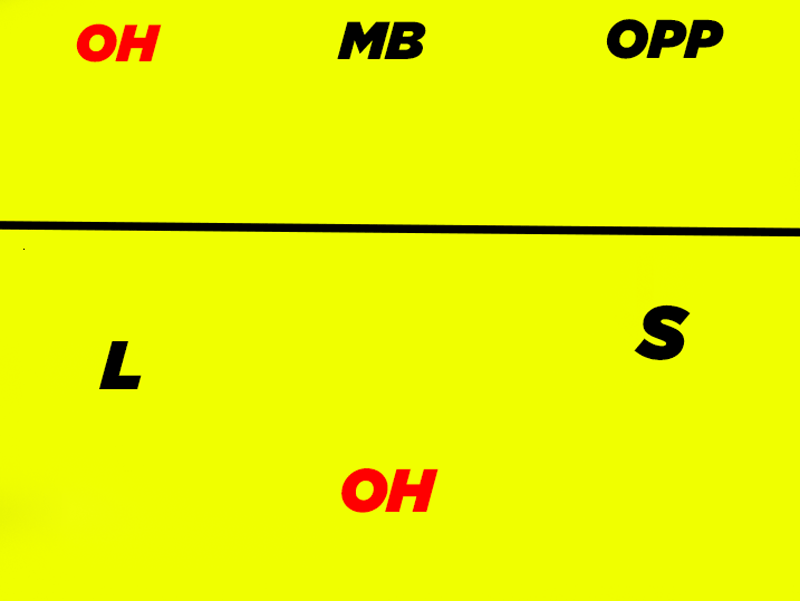
When the ball is set to the outside, the OH must promptly drop off the net and reposition closer to the 10-foot line to effectively defend against sharp cross-court shots or tips.
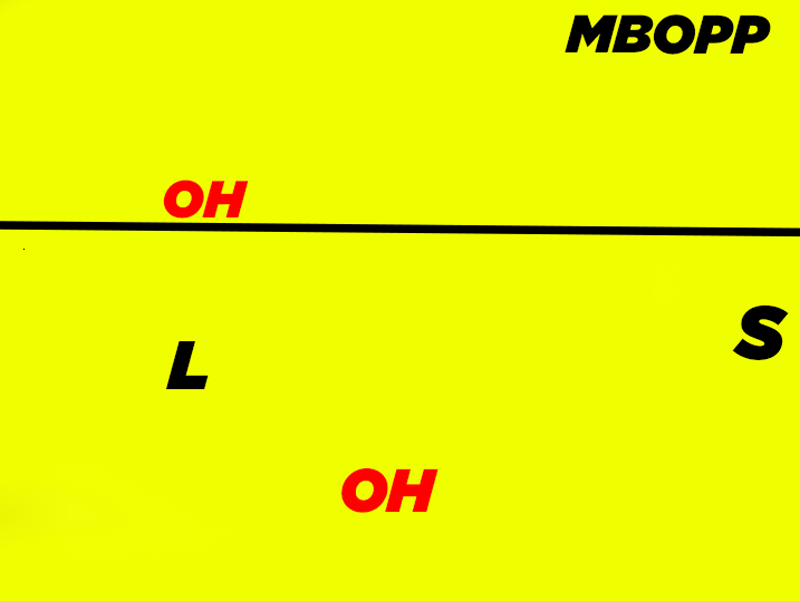
In the backcourt, the outside hitter’s base position predominantly lies in position 6, with rare instances of placement in position 5 (refer to the libero section above for clarification).
Their primary defensive responsibilities entail guarding against deep spikes and balls deflected high off the block.
Opposite Hitter Base Positions
In the front row, the opposite hitter (often referred to as the right-side hitter) defends in position 2 and bears the responsibility of blocking the opposition’s outside hitter.
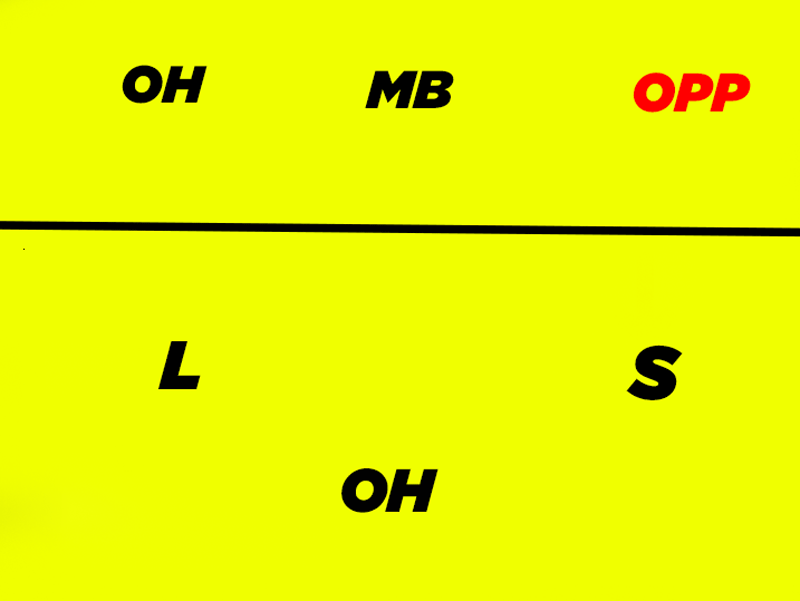
When the ball is set behind, the opposite hitter must promptly drop off the net and reposition closer to the 10-foot line to effectively defend against sharp cross-court shots or tips.
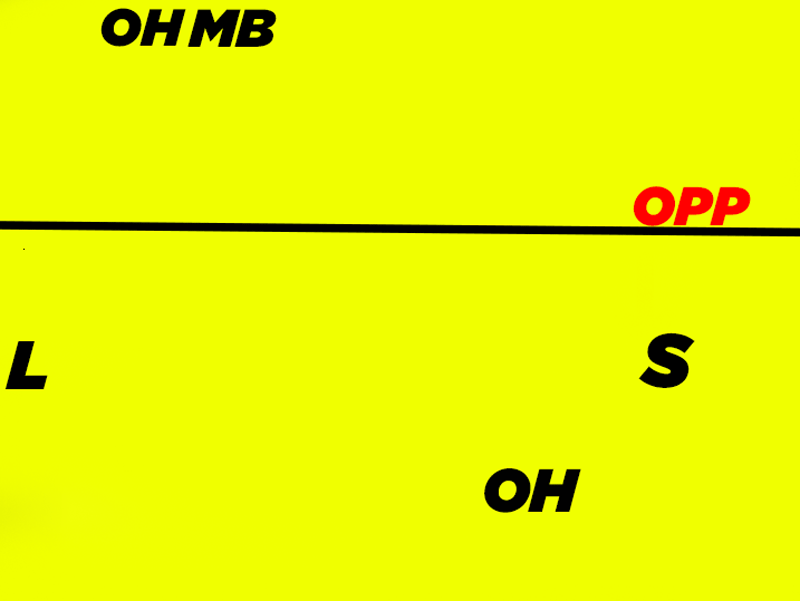
In the backcourt, the opposite will assume the defensive position in position 1.
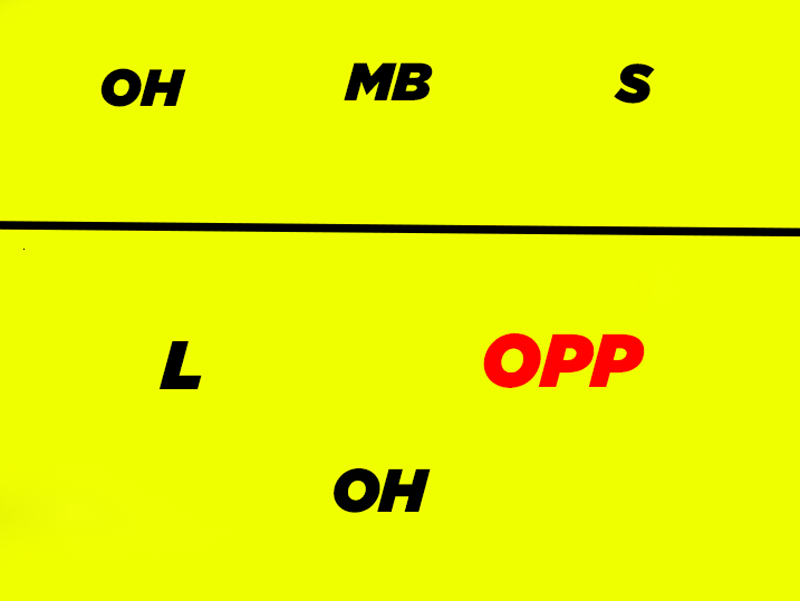
Setter Base Positions
Positioned in the front court, the setter’s base position is in position 2, where they are assigned the responsibility of blocking against the opposition’s outside hitter.

Additionally, the setter must be prepared to retreat to the 10-foot line to defend when the ball is set behind.
When the setter transitions to the backcourt, their defensive stance is assumed from position 1.

Position 1 is strategically chosen as it is the closest spot on the court to position 2, where the setter typically looks to transition to set effectively.
How To Teach Volleyball Base Positions
Initially, ensure that each player is aware of their designated position on the volleyball court.
A practical approach to familiarizing new volleyball players with their base positions involves assembling 6 players on the court and methodically walking through each rotation, mimicking game scenarios.
Commence the exercise with players positioned in their serve receive spots, simulating successful passes and spikes over the net.
For younger teams, incorporate a verbal cue such as “SWITCH” once the ball crosses the net to prompt swift movement to respective base positions.
Live volleyball usage is not mandatory for this drill; the focus is primarily on refining movement and positioning around the court.
This method is optimal for comprehensively learning base positions and understanding serve-receive strategies within various rotation systems, including 4-2, 6-2, or 5-1.
Also Read: Best Volleyball Positions For Short Players in 2024
